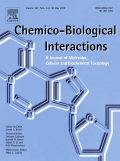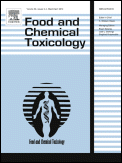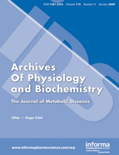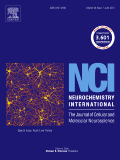
NEUROTOXICITY RESEARCH
Scope & Guideline
Advancing the Science of Neurotoxicology
Introduction
Aims and Scopes
- Neurotoxic Mechanisms:
Research focusing on the cellular and molecular mechanisms underlying neurotoxicity, including oxidative stress, inflammation, and apoptosis, is a core area of the journal's scope. - Neuroprotective Strategies:
The journal highlights studies that explore various neuroprotective agents and strategies, including pharmacological interventions and dietary supplements, aimed at mitigating the effects of neurotoxicity. - Neurodegenerative Disease Models:
A significant emphasis is placed on the development and utilization of animal models and in vitro systems to study neurodegenerative diseases such as Alzheimer's, Parkinson's, and Huntington's disease. - Pharmacological Interventions:
The journal covers research on the efficacy and mechanisms of various pharmacological agents in preventing or treating neurotoxic effects and neurodegenerative conditions. - Environmental Neurotoxicology:
Research examining the impact of environmental toxins, including heavy metals and pesticides, on nervous system health is a prominent feature of the journal. - Behavioral and Cognitive Assessments:
Studies that assess the behavioral and cognitive implications of neurotoxic exposure in animal models provide valuable insights into the functional outcomes of neurotoxicity.
Trending and Emerging
- Gut-Brain Axis Research:
Emerging studies exploring the gut-brain axis highlight how gut microbiota may influence neuroinflammatory processes and neurodegenerative diseases, marking a significant trend in current research. - Nanotechnology in Neuroprotection:
The application of nanotechnology for drug delivery and neuroprotection is gaining traction, with research focusing on nanoparticles as a means to enhance therapeutic efficacy and reduce neurotoxicity. - Epigenetic Modifications:
Research investigating the role of epigenetic changes in neurotoxicity and neurodegeneration is on the rise, indicating a growing interest in understanding how environmental factors can influence gene expression. - Cannabinoid Research:
The therapeutic potential of cannabinoids in neuroprotection and the treatment of neurodegenerative diseases is increasingly being explored, reflecting a shift towards recognizing the benefits of these compounds. - Neuroinflammation and Immune Response:
There is a growing emphasis on understanding the role of neuroinflammation and the immune system in neurotoxicity, with studies focusing on how inflammatory pathways contribute to neuronal damage. - Behavioral and Cognitive Impacts of Neurotoxicity:
Research assessing the long-term behavioral and cognitive effects of neurotoxic exposure in both human and animal studies is becoming more prevalent, highlighting the implications of neurotoxicity on mental health.
Declining or Waning
- Traditional Neurotoxic Agents:
Research on classical neurotoxic agents, such as lead and mercury, has seen a decrease as newer methodologies and agents gain attention, shifting focus towards more contemporary neurotoxins and their mechanisms. - Invasive Techniques in Neurotoxicity Research:
Studies employing highly invasive techniques in animal models are becoming less common, as there is a growing preference for non-invasive or minimally invasive methodologies that prioritize animal welfare. - Single-Agent Toxicity Studies:
There is a trend away from studies focusing solely on the effects of single neurotoxic agents, with a growing interest in combinatorial effects and interactions between multiple compounds. - Historical Reviews of Neurotoxicity:
While reviews are still valuable, there has been a noticeable decline in the publication of historical reviews on neurotoxic agents, as the focus shifts towards innovative research and novel findings.
Similar Journals

CHEMICO-BIOLOGICAL INTERACTIONS
Illuminating Chemical and Biological SynergiesCHEMICO-BIOLOGICAL INTERACTIONS is a premier journal published by Elsevier Ireland Ltd, dedicated to advancing the field of chemical and biological interactions since its inception in 1969. With a robust focus on pharmacology and toxicology, the journal holds a prestigious Q1 ranking in both Medicine (miscellaneous) and Toxicology, reflecting its significance in disseminating influential research. As part of the Scopus database, it ranks #21 out of 133 journals in Toxicology, positioning it in the 84th percentile and ensuring high visibility for cutting-edge studies. This scholarly platform serves as a crucial resource for researchers, professionals, and students who seek reliable and innovative findings at the intersection of chemistry and biology. While currently not open access, CHEMICO-BIOLOGICAL INTERACTIONS provides a comprehensive collection of articles that contribute to the ongoing dialogue in toxin research and its implications on medicinal chemistry, thereby fostering advancements in public health and safety.

FOOD AND CHEMICAL TOXICOLOGY
Championing research that protects consumers and environments.FOOD AND CHEMICAL TOXICOLOGY, published by Pergamon-Elsevier Science Ltd, is a prestigious journal with a significant impact in the fields of food science, medicine, and toxicology, reflecting its Q1 and Q2 quartile rankings in various categories as of 2023. Established in 1982, this journal continues to serve as an essential platform for disseminating high-quality research focused on the toxicological assessment of foods and chemicals, aiming to advance knowledge that affects public health and safety. With a pivotal role in integrating diverse disciplines, including pharmacology and agricultural sciences, the journal ranks impressively within the top percentiles—specifically 95th in Toxicology and 92nd in Food Science on the Scopus metrics. Though it operates on a traditional subscription model, the journal is committed to providing valuable insights and findings to researchers, professionals, and students across the globe, making it a vital resource in the ongoing discourse around food safety and environmental health. Its comprehensive scope underscores its importance in shaping evidence-based policies and practices.

JOURNAL OF APPLIED TOXICOLOGY
Unveiling the Complexities of Chemical InteractionsJOURNAL OF APPLIED TOXICOLOGY, published by Wiley, stands as a leading platform in the field of toxicology, focusing on the rigorous examination of chemical substances and their effects on biological systems. With an impressive Impact Factor, it ranks in the top quartile (Q2) for toxicology journals, reflecting its esteemed position within the scientific community. The journal, identifiable by its ISSN 0260-437X and E-ISSN 1099-1263, has been an invaluable resource since its inception in 1981, and it continues to serve as a conduit for innovative research and practical applications through 2024. Positioned at the forefront of the field, it garners recognition in the Scopus Rankings, where it ranks #31 out of 133 journals in the toxicology category, placing it in the 77th percentile—a testament to its contribution to the advancement of pharmacology and toxicological sciences. While not an open-access journal, it remains accessible to a wide audience of researchers, professionals, and students eager to explore cutting-edge findings in applied toxicology, making it a pivotal resource for enhancing knowledge and fostering collaboration in the field.

STRESS-THE INTERNATIONAL JOURNAL ON THE BIOLOGY OF STRESS
Bridging Disciplines in Stress ResearchSTRESS - THE INTERNATIONAL JOURNAL ON THE BIOLOGY OF STRESS, published by Taylor & Francis Ltd, is an esteemed open-access journal dedicated to advancing our understanding of stress and its biological underpinnings. Established in 1996 and continuing until 2024, this journal is pivotal in the exploration of stress across multiple dimensions, including its impact on mental health, neurobiology, and endocrine systems. With an impressive categorization in Q2 and Q3 quartiles across various fields such as Behavioral Neuroscience, Psychiatry, and Physiology, STRESS ranks commendably within its discipline, positioning itself as a vital resource for researchers and professionals alike. As of 2022, the journal's open access policy enhances visibility and accessibility, fostering a broader dissemination of knowledge. The journal invites submissions from a diverse range of disciplines, aiming to bridge gaps across fields and encourage interdisciplinary collaboration. By addressing the multifaceted nature of stress, STRESS remains essential for those eager to contribute to this dynamic and critical area of research.

Toxins
Fostering collaboration in the fight against environmental toxins.Toxins, published by MDPI, is a leading open-access journal specializing in the field of toxicology, with a strong emphasis on the health implications of toxins across various environments. Established in 2009, this journal has quickly ascended to prominence, attaining a Q1 ranking in both the Health, Toxicology and Mutagenesis and Toxicology categories, underscoring its significant contribution to the scientific community. With an impressive Scopus ranking, placing it within the top percentile of related fields, Toxins serves as a vital resource for researchers, professionals, and students dedicated to advancing knowledge in toxicology and environmental health. The journal encourages the open dissemination of innovative research and critical reviews that explore the mechanisms, effects, and management of toxic substances, thus ensuring that vital research outcomes reach a global audience. For those looking to keep abreast of cutting-edge developments in the field, Toxins is an indispensable platform for scientific exchange and collaboration.

ARCHIVES OF TOXICOLOGY
Advancing the Frontiers of Toxicological ScienceARCHIVES OF TOXICOLOGY is a prestigious journal published by Springer Heidelberg, dedicated to advancing research in the field of toxicology and related disciplines. With a distinguished history dating back to 1930, this journal has continuously provided vital insights and groundbreaking studies, making it a cornerstone in the areas of health, toxicology, and medicine. Recognized for its high impact, it occupies a top-ranking position in Scopus, with remarkable quartile placements in 2023, categorizing it as Q1 in Health, Toxicology and Mutagenesis, and Q1 in Medicine (Miscellaneous). The journal highlights critical research and innovative methodologies, appealing to a diverse audience of researchers, professionals, and students committed to understanding the complexities of toxic substances and their implications for public health and environmental safety. The journal does not currently offer open access, allowing for a more traditional but rigorous peer-review process that ensures the quality and integrity of every published article. Join the global discourse in toxicological science with ARCHIVES OF TOXICOLOGY, where every contribution furthers the understanding of safety and toxicity in our world.

Molecular & Cellular Toxicology
Unraveling the molecular mysteries of toxic responses.Molecular & Cellular Toxicology, published by the Korean Society Toxicogenomics & Toxicoproteomics (KSTT), is a significant journal in the field of toxicology, providing crucial insights into molecular mechanisms underlying toxic responses. With an ISSN of 1738-642X and E-ISSN 2092-8467, this journal serves as a vital platform for researchers, professionals, and students interested in the latest findings and advancements in toxicology, health, and environmental science. Although it operates under a subscription model, it maintains rigorous peer review standards, contributing to its respectable Q3 classification in Health, Toxicology and Mutagenesis, and its Q2 standing in Pharmacology, Toxicology, and Pharmaceutics. The journal, intersecting with innovative aspects of pharmacology and public health, aims to foster a deeper understanding of toxicological impacts on cellular processes and overall health. Located in Germany and supported by a dedicated editorial board, Molecular & Cellular Toxicology stands out in the academic community, encouraging interdisciplinary discourse and collaboration to address critical toxicological challenges. Engage with us for cutting-edge research that informs and shapes the future of toxicological science.

Toxicology and Environmental Health Sciences
Advancing the Science of Environmental Health and ToxicologyToxicology and Environmental Health Sciences is a peer-reviewed journal published by the Korean Society for Environmental Risk Assessment & Health Science, dedicated to advancing the fields of toxicology and environmental health. With an ISSN of 2005-9752 and E-ISSN 2233-7784, this journal serves as a vital platform for researchers, professionals, and students seeking to explore the intricate relationships between environmental risks and public health. Operating from South Korea, it has a converged years span from 2009 to 2024, and currently holds a respectable Q3 quartile ranking in both Health, Toxicology and Mutagenesis and Toxicology. This positions the journal within a critical space for those invested in understanding and mitigating environmental health challenges. Although not an open-access journal, it continues to foster high-impact research, contributing to a better understanding of toxicological sciences and environmental health dynamics. Engage with the latest findings and discussions that shape this evolving field through the insightful articles published herein, reinforcing its importance as a resource for scholars and practitioners alike.

ARCHIVES OF PHYSIOLOGY AND BIOCHEMISTRY
Illuminating the Pathways of Physiological ScienceArchives of Physiology and Biochemistry, published by Taylor & Francis Ltd, is a renowned journal that has been pivotal in advancing knowledge and research in the fields of physiology and biochemistry since its inception. With an impact factor reflective of its significant contributions, this journal is categorized in Q2 in Medicine (miscellaneous) and Q3 in Physiology, underscoring its relevance and scholarly impact within the scientific community. The journal publishes original research articles, review papers, and innovative methodologies that explore the intricate relationships between physiological functions and biochemical processes. With its commitment to fostering scientific discourse, the Archives of Physiology and Biochemistry serves as an essential resource for researchers, professionals, and students alike, providing insights and evidence that drive forward the frontiers of medical and physiological science. The journal is accessible in both print and online formats, ensuring that critical research reaches a wide audience.

NEUROCHEMISTRY INTERNATIONAL
Connecting Researchers to Transform Neurochemical UnderstandingNEUROCHEMISTRY INTERNATIONAL, published by Pergamon-Elsevier Science Ltd, offers a premier platform for researchers and professionals in the realms of cell biology and cellular and molecular neuroscience. Established in 1980 and continuing its passion for advancing the field, this esteemed journal enhances scientific collaboration with a notable 2023 Q2 ranking in both relevant categories, placing it among the top-tier publications in its discipline with a Scopus rank of 23/97 for Cellular and Molecular Neuroscience. With its focus on groundbreaking research, the journal provides a wealth of vital data and insights that drive forward our understanding of neurochemistry and its implications in health and disease. While not an Open Access journal, NEUROCHEMISTRY INTERNATIONAL is integral for professionals, academics, and students aiming to stay at the forefront of neurobiological research innovations, making significant contributions to both academia and clinical applications.